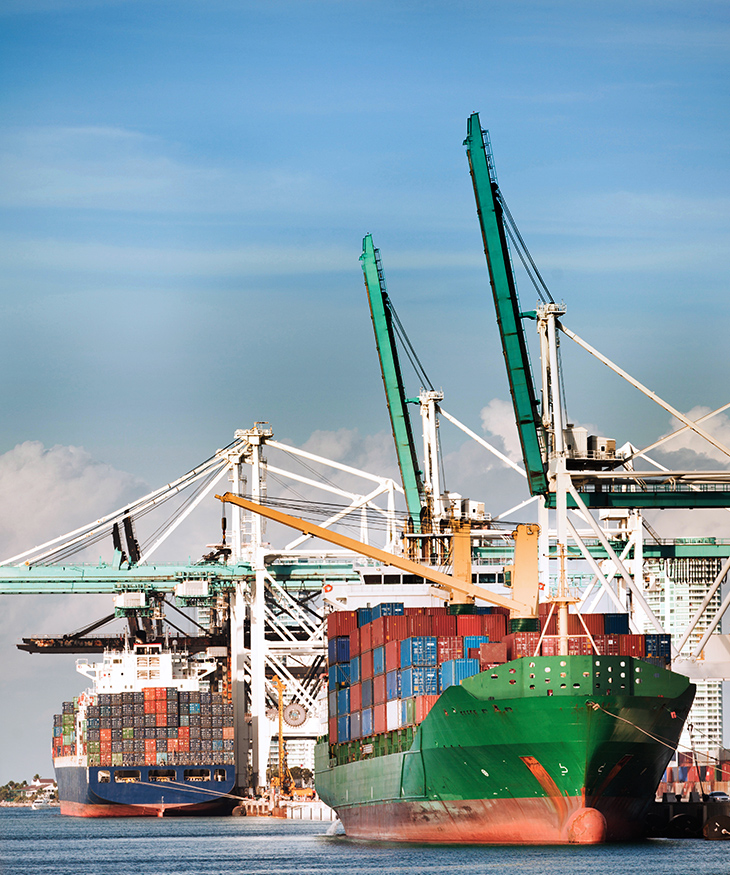
Buy Clean
Buy Clean is a way to guarantee that products and materials that are used for public projects like infrastructure improvements are the cleanest and most sustainable available. Buy Clean policies help ensure that taxpayer dollars are spent responsibly, on materials that are manufactured in a cleaner, more efficient, environmentally-friendly manner—reducing pollution and the negative health impacts that go along with it while supporting good jobs across our nation.
Why it Matters
In the United States, the industrial sector is responsible for 30% of emissions and that’s expected to increase 17.6% through 2050. Adding to the problem, goods and materials imported to the U.S. from overseas are often made in less environmentally friendly ways than they would be here at home because they come from countries with lower environmental standards.

Buy Clean
A policy to promote spending taxpayer dollars on materials that are manufactured in a cleaner, more efficient, environmentally-friendly manner.
This reduces industrial pollution and health impacts, while supporting family-sustaining jobs and building globally-competitive domestic manufacturing.
Carbon Loophole
Often, products and materials produced overseas are manufactured in ways that would not meet U.S. environmental and emissions standards. The higher emissions from the production of those materials pass through the “carbon loophole,” when imported.
Embodied Carbon
“Embodied carbon” is the sum of all of the carbon emissions resulting from the production of a product or material. This measures the carbon impact of an item from the time it’s made until it’s used.
Many of these imported products and materials could be made here in the U.S. by American workers instead of in countries with lower environmental and health standards and higher emitting facilities. This is known as the “carbon loophole.”
Tackling industrial sector emissions – which are concentrated in a select number of energy intensive manufacturing subsectors, including steel, cement, and chemicals, must be central to our climate strategy moving forward. In addition, such emissions reductions would support improved public health outcomes for workers and communities that live near manufacturing facilities.
On December 8, 2021, President Biden released Executive Order 14057, “Catalyzing Clean Energy Industries and Jobs Through Federal Sustainability,” and the accompanying Federal Sustainability Plan, officially launching the first-ever national Buy Clean program. In his executive order, President Biden outlined pathways for the federal government to use its scale and procurement power to help achieve net-zero emissions economy-wide by no later than 2050. Buy Clean policy is included in this strategy for the first time ever in federal procurement. Read more about the executive order here.
If done right, we can rebuild American manufacturing, reduce emissions, close the carbon loophole, improve public health, and support good, middle-class jobs across America. Buy Clean policies can play a significant role in reducing emissions and driving further improvements in the manufacturing sector.

The History of Buy Clean
Led by the BlueGreen Alliance, Sierra Club, United Steelworkers, and other business, labor, and environmental organizations, a coalition was formed in 2016 to push for a new law in California that required state agencies to consider the embedded emissions of industrial products like steel and glass when contracting for state-funded infrastructure projects. Many companies in California already had to comply with stringent emissions standards and they were often losing out on public bids to lower cost out-of-state or foreign bidders.
After taking a hard look at the industry in the state, Buy Clean California was passed in the California legislature with bipartisan support and signed into law by Governor Jerry Brown on October 15, 2017.
Beginning in 2019, Buy Clean requires contractors who bid on state infrastructure projects to disclose, via an environmental product declaration (EPD), the greenhouse gas emissions data for certain materials, such as steel and glass, produced in their facilities.
As the world’s sixth largest economy, California has substantial purchasing power; Buy Clean California sends a powerful market signal to manufacturers to reduce their emissions in order to participate in the California market. Buy Clean California also works to level the playing field for manufacturers around the U.S. and the world who have invested in clean, efficient manufacturing technologies and processes.
The Buy Clean approach allows California to help clean businesses and industries maintain their position as strong, global leaders on climate action. It creates motivation for suppliers to reduce their climate pollution and will no longer reward manufacturers with the most polluting plants.
On May 18, 2021 Washington State Governor Jay Inslee signed into law the state’s 2021-23 Biennium Budgets. The budgets make critical progress on Buy Clean and Buy Fair by funding the creation of a database to track building materials purchased for state-funded infrastructure projects and two large Buy Clean and Buy Fair pilot projects. The BlueGreen Alliance worked alongside multiple coalition partners to secure these two essential budget provisions.
Buy Clean America Summit
On October 23, 2019 the BlueGreen Alliance and Third Way, in partnership with ClimateWorks, hosted a one-day summit in Washington, D.C. exploring Buy Clean as a policy solution to one of the most vexing climate issues we face—the carbon loophole.
Watch the video of the summit below.
